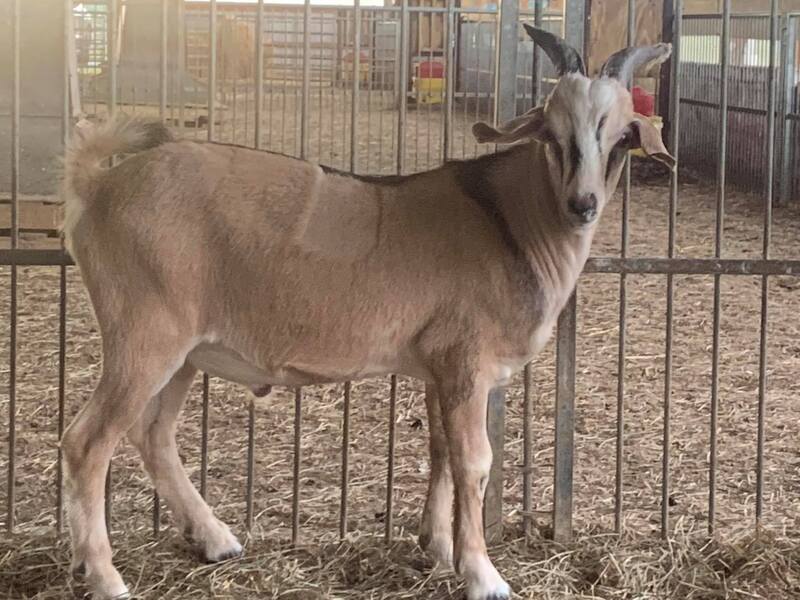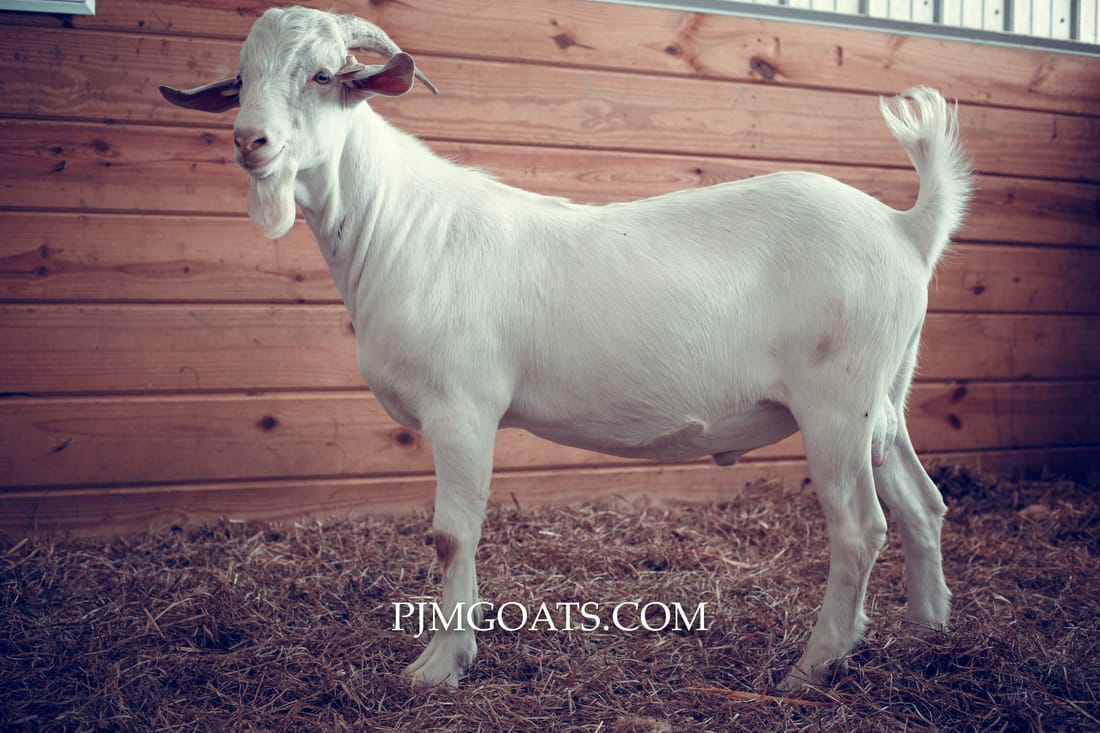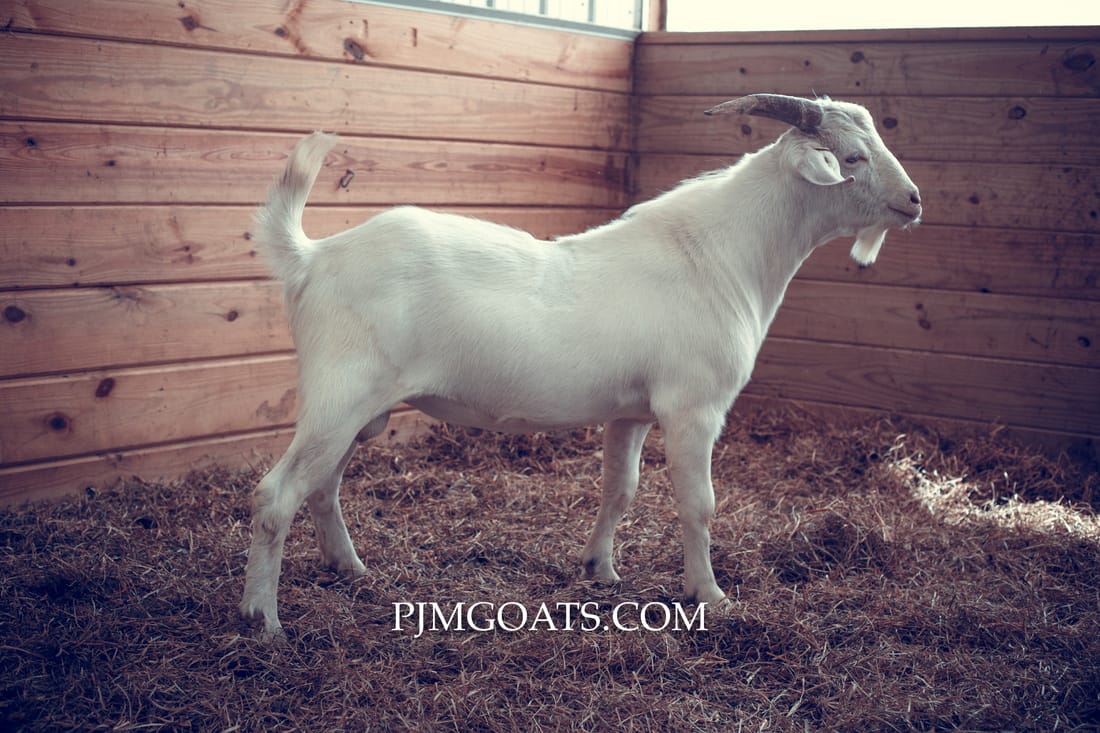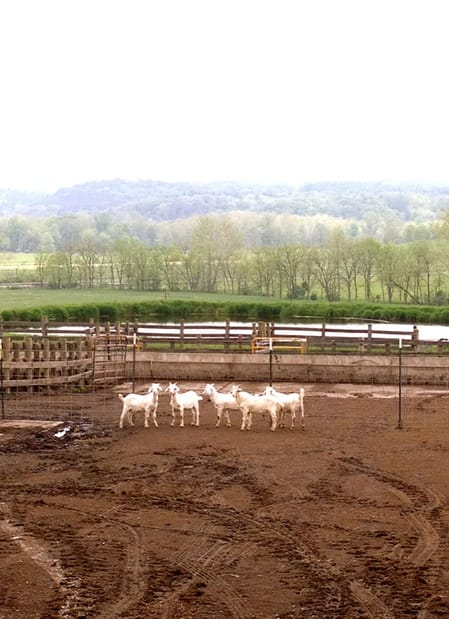Performance Tested Genetics:
the basis from which we built
Performance Testing takes many forms. From On-Farm progeny testing to the University Performance Tests.
Different traits are more or less important in different tests. To test only one trait and make that the exclusive focus of you program amounts to single trait selection. Having said that; all good university-based-tests measure and evaluate multiple traits. With the various traits' measurements in hand, a balanced overview needs to be reached to assess the value of the goat. Indices with combine trait values using a weighted formula help with reaching a balanced conclusion.
The Forage-Only test of Maryland was a test where survivability and worm resistance was tested to the max. Many goats died at the site before some supplementation was introduced in 2014. Less goats suffered poor performance after that, but each year saw some that did not thrive or sometimes complete the test. The toughest showed themselves. The goats with the most growth potential showed themselves. Sometimes they were the same goats.
The Oklahoma Test has always used a higher protein supplementation and has had higher ADGs there than in Maryland as a result. The FECs seen in Oklahoma are typically not as high as those in Maryland due to the extremely high stocking rate in MD.
The Pennsylvania and West Virginia Tests are Feedlot type tests. Obviously, no FEC information is gathered in these tests but many other useful traits are measured. "Meatiness" is assessed by using REA Measurements. ADG figures and RFI numbers show the growth potential and the feed efficiency of the goats respectively. Scrotal circumference measurements are taken. I have found these feedlot tests very useful for gathering information about the likely carcass quality and growth potential of the genetics I have tested.
To the the Fall of 2016, We had tested about 45 goats through different performance tests. We had very good results. We have recorded the highest ADG figures recorded on Kikos in the shorter inter-test periods with two of our kids gaining 1.1 lbs per day over short periods and multiple goats achieving over .75 lbs per day over the entire tests. The current highest gaining Kiko kid through an entire test came from our program, - "Copyrights WV Winner 14"- finished the WV Test of 2014 with an ADG of .89 lbs gain per day. I believe we have produced 7 of the top 10 Kiko gainers on record at that point.
In the forage based test of Maryland, we have had a "finalist" in the test (top 10 goats usually) each of the five years that we put kids in the test. In 2016, we had two of the finalists out of 97 starters. Many goats did not complete the test and another eight kids were removed for lack of performance. In 2015 and 2016, we had no goat be dewormed; and in both years had the darkest FAMACHA-Score-average goats through the entire test by "PJM Hard As Nails" in 2015 and in 2016 by "PJM Top Five". Both completed with an average FAMACHA of just 1.
The tests are a way to evaluate your own goats and can inform you about the traits that your program are successfully producing and where the program might require improvement. They can also sometimes help to identify families which possess traits that you may want to retain or expand throughout your herd.
Different traits are more or less important in different tests. To test only one trait and make that the exclusive focus of you program amounts to single trait selection. Having said that; all good university-based-tests measure and evaluate multiple traits. With the various traits' measurements in hand, a balanced overview needs to be reached to assess the value of the goat. Indices with combine trait values using a weighted formula help with reaching a balanced conclusion.
The Forage-Only test of Maryland was a test where survivability and worm resistance was tested to the max. Many goats died at the site before some supplementation was introduced in 2014. Less goats suffered poor performance after that, but each year saw some that did not thrive or sometimes complete the test. The toughest showed themselves. The goats with the most growth potential showed themselves. Sometimes they were the same goats.
The Oklahoma Test has always used a higher protein supplementation and has had higher ADGs there than in Maryland as a result. The FECs seen in Oklahoma are typically not as high as those in Maryland due to the extremely high stocking rate in MD.
The Pennsylvania and West Virginia Tests are Feedlot type tests. Obviously, no FEC information is gathered in these tests but many other useful traits are measured. "Meatiness" is assessed by using REA Measurements. ADG figures and RFI numbers show the growth potential and the feed efficiency of the goats respectively. Scrotal circumference measurements are taken. I have found these feedlot tests very useful for gathering information about the likely carcass quality and growth potential of the genetics I have tested.
To the the Fall of 2016, We had tested about 45 goats through different performance tests. We had very good results. We have recorded the highest ADG figures recorded on Kikos in the shorter inter-test periods with two of our kids gaining 1.1 lbs per day over short periods and multiple goats achieving over .75 lbs per day over the entire tests. The current highest gaining Kiko kid through an entire test came from our program, - "Copyrights WV Winner 14"- finished the WV Test of 2014 with an ADG of .89 lbs gain per day. I believe we have produced 7 of the top 10 Kiko gainers on record at that point.
In the forage based test of Maryland, we have had a "finalist" in the test (top 10 goats usually) each of the five years that we put kids in the test. In 2016, we had two of the finalists out of 97 starters. Many goats did not complete the test and another eight kids were removed for lack of performance. In 2015 and 2016, we had no goat be dewormed; and in both years had the darkest FAMACHA-Score-average goats through the entire test by "PJM Hard As Nails" in 2015 and in 2016 by "PJM Top Five". Both completed with an average FAMACHA of just 1.
The tests are a way to evaluate your own goats and can inform you about the traits that your program are successfully producing and where the program might require improvement. They can also sometimes help to identify families which possess traits that you may want to retain or expand throughout your herd.

















